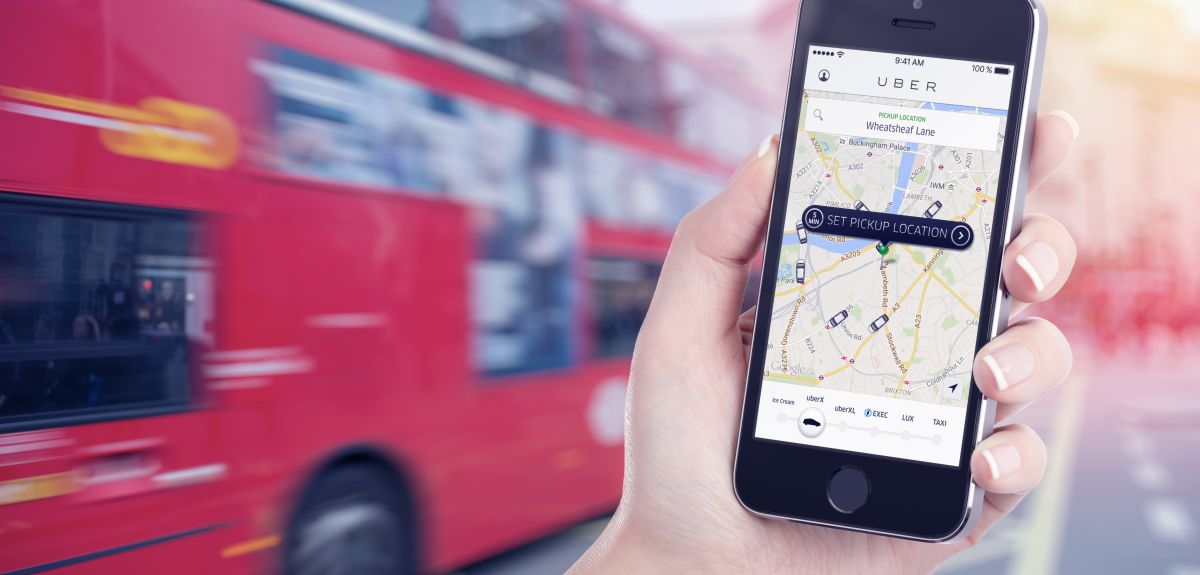
Credit: Shutterstock
Uber linked to a reduction in serious road traffic injuries in the UK
A study by University of Oxford researchers, published today in Social Science & Medicine, has found that ride-hailing provider, Uber, is associated with a 9% decline in serious road accident injuries in the UK. However, that relative improvement is counterbalanced by the fact that there was an increase in slight road accident injuries in London.
Since its launch in San Francisco in 2010, Uber has experienced phenomenal growth, reaching six continents, more than 70 countries, and 700 cities through 2018. Whilst it took Uber roughly six years to reach the 1 billion ride milestone (March 2016), it took just two and a half more years (September 2018) to reach 10 billion total rides.
Professor David Kirk from the University of Oxford’s Department of Sociology and Nuffield College said: ‘Ride-hailing is a private sector intervention that may have transformative potential to change the nature of road safety worldwide, yet there has been relatively little research on the potentially beneficial and detrimental effects of ride-hailing for public safety. Our study presents the very first findings of the association between the deployment of Uber and road accident injuries in the UK, thereby adding much needed research to the public debate about the safety of ride-hailing.’
The study, a collaboration between researchers at Oxford, Bocconi University, and the University of California-Davis, exploited differences in the timing of the deployment of Uber across Britain to test the association between the advent of Uber’s services and rate of fatal and non-fatal accidents in those areas.
In Great Britain, road accident fatalities and injuries have steadily declined since the mid-1960s, due in part to efforts to improve road and vehicle safety and limit the extent of drink-driving. Yet progress on reducing road fatalities as well as serious injuries stalled in recent years and even began to reverse course, with serious injuries increasing nearly 12% from 2014 to 2018. Along with suicide and drug overdose, traffic fatalities are among the leading causes of death of 15 to 29 year olds in the UK, as well as worldwide.
Professor Kirk said: ‘Expanding the availability and lowering the cost of alternate transportation options should, in theory, reduce the number of drink-driving occurrences and fatalities. Conversely, Uber may actually increase road accidents by increasing the number of vehicles and vehicle miles travelled on Great Britain’s roads.’
Kirk, with colleagues Nicolo Cavalli (Bocconi) and Noli Brazil (UC-Davis), found that slight injuries (sprains and bruises) declined outside of London after the rollout of Uber, but increased within London. No statistically significant association between Uber and traffic fatalities was observed.
Professor Kirk said: ‘One interpretation for the decline in serious road injuries is that Uber may be a substitute form of transportation for risky drivers, including drink-drivers. However, ride-hailing is also a substitute for public transit, particularly buses, thereby increasing traffic congestion.
‘Our next step is to examine the effect on road traffic accidents following the withdrawal of Uber in cities such as London, where the provider may have lost its licence to operate. We also want to examine the effects of Uber and other ride-hailing competitors in countries besides the US and UK, given that most of the ride-hailing market is in Asia.’
The paper – ‘The Implications of Ridehailing for Risky Driving and Road Accident Injuries and Fatalities’ is available online at Social Science & Medicine at https://doi.org/10.1016/j.socscimed.2020.112793
 Expert Comment: Chatbot-driven sexual abuse? The Grok case is just the tip of the iceberg
Expert Comment: Chatbot-driven sexual abuse? The Grok case is just the tip of the iceberg
 New study finds that stopping weight-loss drugs is linked to faster regain than ending diet programmes
New study finds that stopping weight-loss drugs is linked to faster regain than ending diet programmes